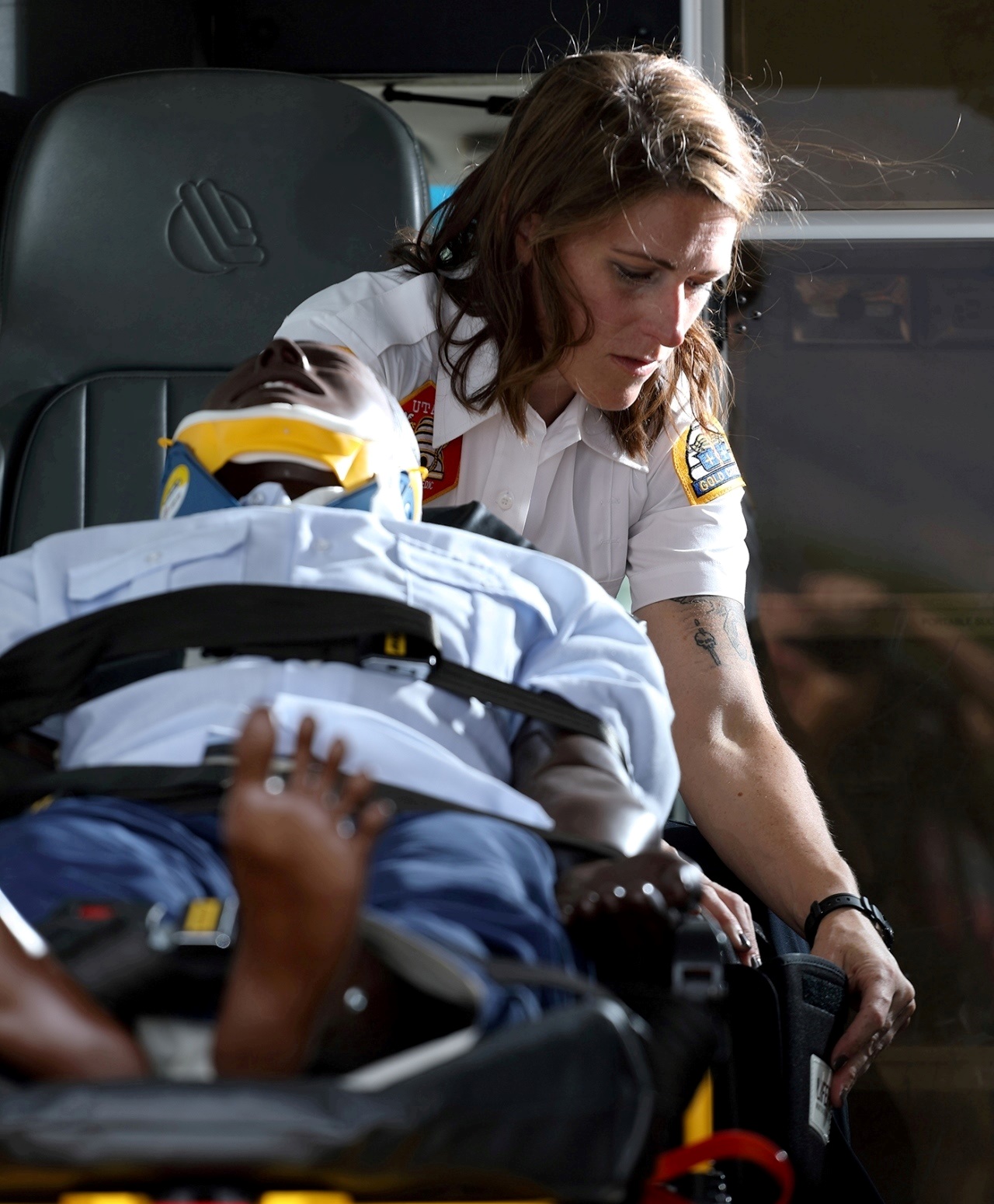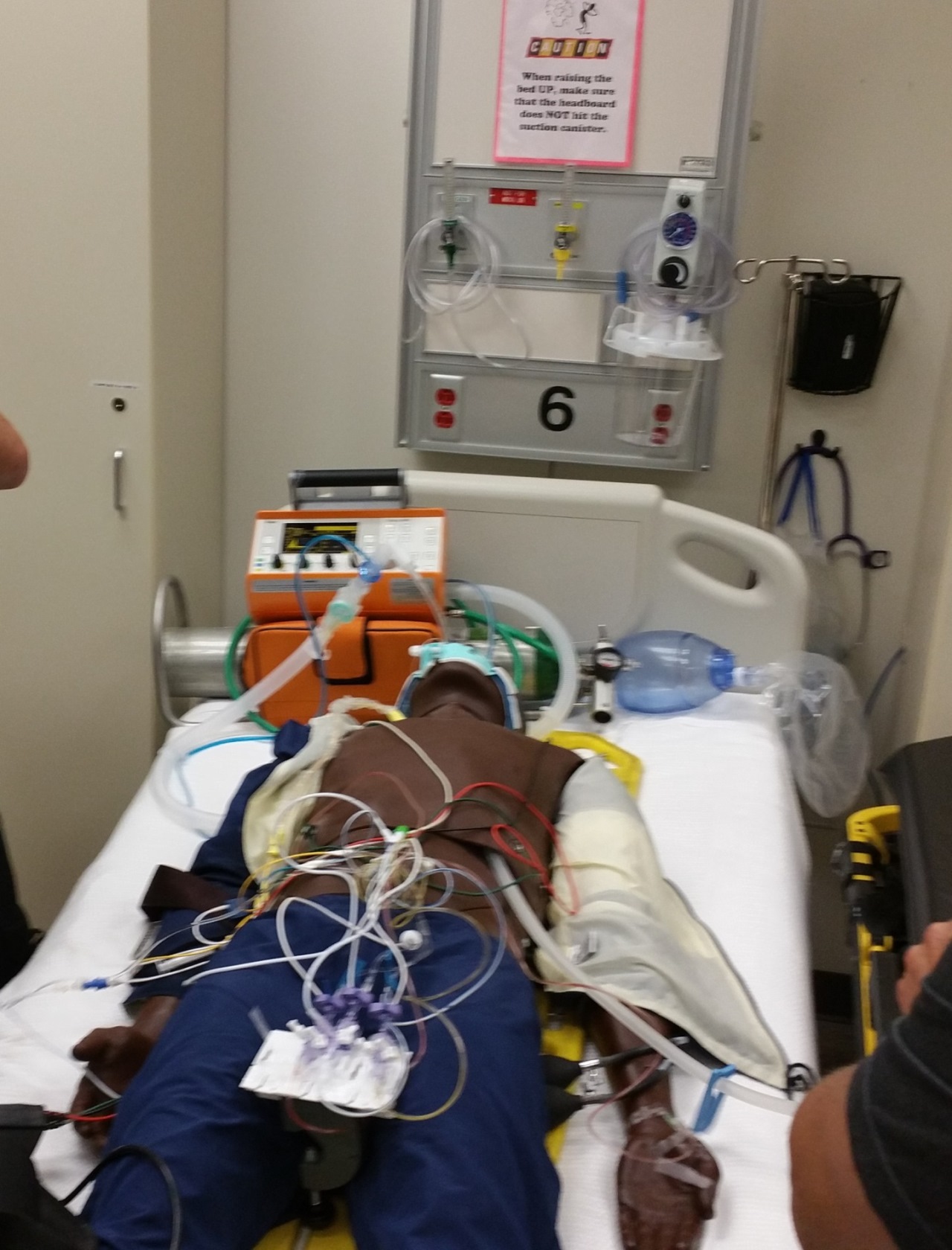Ambulance responses are often hectic: lights flashing, sirens blaring, bystanders watching. In the midst of this chaos, paramedics must calmly survey the situation, then work quickly to stabilize and load the patient into the ambulance. It’s a scene that you may be used to seeing on television, and it also plays out daily inside a classroom of the Dumke College of Health Professions.
As the Department of Emergency Healthcare was celebrating its 40th year at Weber State University, Utah’s first paramedic program has made history once again by creating the first ambulance simulator in the Intermountain West.
Jeffrey Grunow, immediate past chair and associate professor of Emergency Healthcare, was introduced to the ambulance simulator at an emergency medical services educator symposium. He recognized the possibilities it could bring to his department, but at that time, it was only a dream.
“In the past few years we’ve been getting students with little to no field experience,” said Grunow. “Our faculty are street-accomplished paramedics who always wanted to bring more realism to the classroom. I knew building a simulator was the solution.”
When his department received funding from the Dr. Ezekiel R. Dumke College of Health Professions, the dream was fast-tracked to reality. The mission was to create a facility that gives students realistic hands-on experience. The result: an exact replica of a fully functioning Type III Ambulance built inside the Marriott Allied Health Building.

